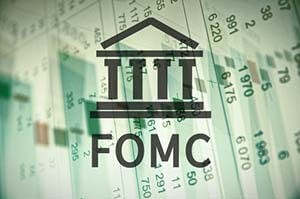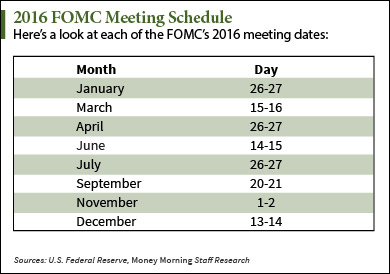 After the Fed interest rate hike on Dec. 16 (Wednesday), investors are anxious to know when the next rate hike will be.
After the Fed interest rate hike on Dec. 16 (Wednesday), investors are anxious to know when the next rate hike will be.
Last week's quarter-percentage point (0.25%) Fed interest rate hike was the first for the U.S. Federal Reserve since June 2006. The Fed's vote to raise rates was unanimous, signaling its increased confidence in the U.S. economy.
At a press conference on Dec. 16, Fed Chairwoman Janet Yellen said the U.S. labor market and economic activity will continue to grow steadily in the following months.
The Fed's ultimate goal is to "normalize" its monetary policy, a strategy to remove its easy money accommodations slowly over time.
But Money Morning Capital Wave Strategist Shah Gilani sees the Fed's "normalization" strategy happening even slower than the central bank anticipates.
"The Fed can't normalize rates any time soon," said Gilani. "All they can do is raise rates a small amount and see what happens."
The Fed interest rate hike was based on economic indicators that it thinks will continue to improve in the future, such as the unemployment rate, job growth, and the inflation rate.
And if the economy stays stable after the Fed's initial interest rate hike, here's how the Fed will raise rates in 2016.
[mmpazkzone name="in-story" network="9794" site="307044" id="137008" type="4"]
How the Fed Will Approach Interest Rate Hikes in 2016
The Fed forecasts four additional 0.25% interest rate hikes by the end of 2016, according to Bloomberg. That would bring the federal funds rate up to 1.4% by the end of 2016.
 One of the main factors that will determine future Fed interest rate hikes is the inflation rate.
One of the main factors that will determine future Fed interest rate hikes is the inflation rate.
According to Yellen, the economy is on track to reach 2% inflation over the next few years.
Because inflation is a lagging indicator, it's one of the hardest trends to measure. The inflation rate changes only after the economy follows a pattern of rising prices. The rise of prices in an economy can be subtle and even insidious if not watched closely. The current U.S. inflation rate, measured by the Consumer Price Index (CPI), is 0.5% through the 12 months ending in November 2015.
While a steady rise in inflation is an important ingredient for a rate hike, the Fed will also track the unemployment rate, gross domestic product (GDP) growth, and job growth in the following months. If any of those indicators stagnate, they'll give the Fed pause at its next two-day meeting in January 2016. Any snag in growth could make the Fed hike rates even slower.
According to a poll by Reuters a few days after the Fed's December meeting, 77 out of 120 economists polled think the next rate hike will take place at the March 15-16 meeting.
Tweet the author @cgsaucier, or leave a comment on Money Morning's Facebook page.
If you think you can always get cash out of your bank account when you want it, you're wrong. Banks can restrict access to deposits - or confiscate them - and yet the general public has no idea these "laws" exist. Here's how this nightmare could impact you...


